Case Studies.
Add Case Study
Our Case Study database tracks 22,657 case studies in the global enterprise technology ecosystem.
Filters allow you to explore case studies quickly and efficiently.
Download Excel
Filters
-
(6,653)
- (2,601)
- (2,127)
- (945)
- View all
-
(5,642)
- (2,469)
- (1,692)
- (826)
- View all
-
(5,571)
- (2,178)
- (1,766)
- (643)
- View all
-
(5,247)
- (2,179)
- (1,715)
- (1,321)
- View all
-
(2,881)
- (1,448)
- (574)
- (376)
- View all
- View all 15 Technologies
- (1,985)
- (1,985)
- (1,915)
- (1,679)
- (1,629)
- View all 42 Industries
- (8,728)
- (4,742)
- (3,618)
- (3,233)
- (2,947)
- View all 13 Functional Areas
- (3,304)
- (2,787)
- (2,603)
- (2,006)
- (1,630)
- View all 129 Use Cases
- (13,581)
- (5,296)
- (4,272)
- (3,520)
- (2,856)
- View all 9 Services
- (504)
- (432)
- (416)
- (382)
- (301)
- View all 1083 Suppliers
Selected Filters
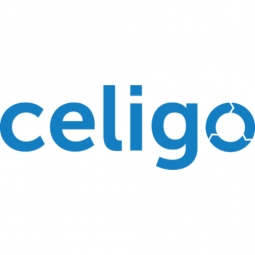
|
Titan Brands' 10X Growth Through Automation with Celigo
Titan Brands, an online retailer of consumer and business goods, experienced rapid growth, expanding from 50 SKUs to over 3000 and processing over 3,000 orders a day. Initially, they used ChannelAdvisor to automate order processing across various ecommerce channels. However, as the business matured and expanded, the need for customization increased, and ChannelAdvisor was unable to meet these requirements. Additionally, ChannelAdvisor's transaction-based charging model became increasingly expensive for Titan Brands, especially during high-volume periods. The company's costs began to skyrocket, and the team felt penalized for their success. In 2016, Titan Brands decided to seek a different solution to meet their growing needs.
|
|
|

|
Topo Designs Streamlines Inventory Management and Cuts Operational Costs by 30% with Celigo
Topo Designs, a company specializing in outdoor backpacks, was facing significant challenges with its aging tech stack. Despite experiencing double-digit sales growth, the company was struggling with accurate financial tracking and inventory management. The existing system required manual reconciliation and keying of data from various sources, leading to inaccuracies and inefficiencies. The company also had issues with order and inventory allocation, with two staff members dedicated to managing virtual locations and inventory transfers. The most significant challenge was maintaining accurate inventory levels throughout the returns process. The accounting team's estimates based on a general cost of goods calculation were often off by over 30%, leading to incorrect listings on the Shopify storefront. With an average of 500-3000 orders per day, this lack of visibility was unsustainable, leading to unfulfilled orders and a 60-day book closing period.
|
|
|

|
Trilogy's Global Business Expansion with integrator.io
Trilogy, a multi-location organization based in Australia and New Zealand, is renowned for its high-performance natural skincare products. The company ships orders globally on a daily basis, which necessitates a robust and efficient order management system. Trilogy's e-commerce side involves intercompany drop shipping, which requires compliance with certain standards for generating purchase orders and invoices. The company faced complex issues due to its international order volume and needed a way to automate and simplify their processes. They were using an FTP Server for packing notifications and shipping confirmations, and a custom workflow to automatically generate an invoice once an item was shipped. However, the process was complex and required a more streamlined solution.
|
|
|

|
Velosio's Accelerated Development and Deployment of AutoQuotes RED ONE Bundle with Celigo
Velosio, a leading provider of ERP, CRM, Cloud productivity, and business intelligence solutions, faced a significant challenge in servicing restaurant equipment distribution companies. The company had developed a unique solution to integrate and automate business processes between AutoQuotes, a dominant Configure, Price, and Quote (CPQ) tool in the industry, and NetSuite. However, the initial design and deployment of this solution, which was based on SQL Server and used NetSuite APIs and temporary SQL tables to store data, proved to be time-consuming and complex. When Velosio tried to redeploy the solution, they found it challenging and more time-consuming than desired. It also required the client to license and run a local server, which was a problem for clients without an IT team or SQL Server licenses and servers. Velosio realized that they needed to rethink the core architecture and technology stack to rapidly deploy and support additional clients.
|
|
|

|
ZoomInfo's Financial System Transformation: A Case Study on Automation and Integration
ZoomInfo, one of the fastest-growing SaaS companies, was facing significant challenges with its financial systems. The company's rapid growth was not being matched by its financial systems, which threatened to become a barrier to its expansion. The core issues were numerous, including manual processes such as inputting sales orders, delays in transaction processing, and inaccuracies due to manual data entry. The company was on the brink of hiring an entire team to handle these processes, which risked exacerbating the issues with inaccurate data entry. The revenue team had to spend a significant amount of time each month fixing data issues, which was a tedious and time-consuming process. Some DIY integrations existed, but they were not effectively implemented. The company needed to find a way to scale their financial systems quickly and automate as much as possible to avoid obstructing their growth.
|
|
|
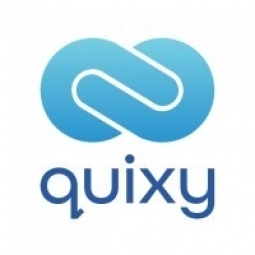
|
Chatsworth International School Transforms Purchase Requisition Process with Quixy's No-Code Platform
Chatsworth International School was struggling with a manual, email-based purchase requisition process that was slow, inefficient, and prone to errors. The school administration, divided into primary and secondary sections, had to process purchase requests through a complex hierarchy of approvals. This process involved extensive email communication for raising requests, seeking approvals, and tracking progress. Locating and honoring requests was a significant challenge as all the information was buried in email trails, leading to slow processing and disruption of regular school operations. Additionally, the use of offline Excel sheets for tracking purchase requests posed risks to data security and was susceptible to calculation errors.
|
|
|
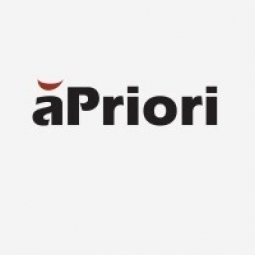
|
Streamlining New Product Introduction Process with aPriori: A Caterpillar Case Study
Caterpillar, a leading manufacturer of construction and mining equipment, diesel and natural gas engines, industrial gas turbines, and diesel-electric locomotives, was seeking to be more proactive with their cost and design decisions. The company was dealing with large, complex, interconnected, and interdependent product and part designs, which required a more proactive strategy for their product cost and design decisions. Caterpillar was also struggling with manual costing, which was time-consuming and less efficient. The company was trying to eliminate the need for cost reduction, which required additional resources and thus increased costs. Furthermore, Caterpillar was negotiating the cost of a part with a supplier for over a year without success.
|
|
|
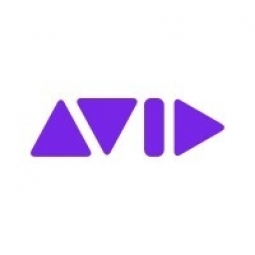
|
SVT's Efficiency and Programming Enhancement with Avid
Stockholm-based SVT, the largest television broadcaster in Sweden, produces approximately 2,000 hours of original programming per year in HD and SD. The challenge was to produce this high-quality programming quickly and cost-effectively. The broadcaster was looking to increase collaboration among media professionals and maximize the value of its media assets. With nearly 30 facilities located throughout Sweden, SVT needed a solution that would enhance collaboration between team members, who needed to share files, projects, and media across the entire network with near instantaneous speed. The broadcaster also wanted to make its systems more efficient and unify the workflow throughout the company.
|
|
|
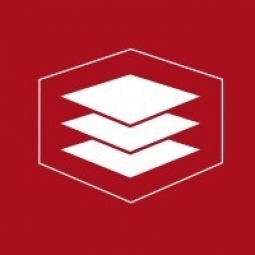
|
CampusGuard's Unified Approach to Cybersecurity and Compliance with CD2 Learning
CampusGuard, a cybersecurity and compliance organization catering to campus-based entities such as higher education, healthcare, and state and local government, faced a significant challenge in 2022. The team at CampusGuard was seeking to update their content to stay competitive and capture the attention of their learners. However, they needed to ensure that their content redesign not only engaged their audience but also met strict accessibility standards. These standards were based on WCAG 2.0 VPAT version 2.4 compliance, which required careful attention to detail and a deep understanding of accessibility requirements.
|
|
|

|
MindVue's IoT-Driven Learning Experience Platform for Mental Wellness
MindVue, a company dedicated to optimizing performance and improving mental wellness through a learning experience platform, faced a significant challenge. The company needed to scale their assessments and learning solutions to cater to a global audience. This requirement became particularly critical as the COVID-19 pandemic halted in-person presentations. The company was in search of a solution that could measure and build mindset skills, such as grit, resilience, hope, self-control, motivation, adaptability, and other factors predictive of performance and positive life outcomes.
|
|
|

|
Afloral Enhances E-commerce Operations with integrator.io
Afloral, a floral decorating company, transitioned to a pure-play e-commerce company in 2007. The company has been growing at a rate of 10% year-over-year for the past decade. To keep up with this growth, Afloral adopted Shopify as their e-commerce platform. However, with over 3,500 SKUs and counting, they faced the challenge of seamlessly connecting and sharing data between the webstore, their third-party logistics provider (3PL), and Afloral’s own warehouses. This integration was crucial to provide full visibility into orders, fulfillment, and products across all platforms. Additionally, Afloral wanted complete control over and visibility into the implementation, enabling them to fix any issues immediately. They also sought the flexibility to build their own ecosystem of applications, integrating third-party applications such as 3PL, accounting, and inventory management into the e-commerce platform.
|
|
|

|
Chubbies Streamlines EDI Processes and Boosts Growth with Celigo
Chubbies, an ecommerce company specializing in men’s shorts, faced significant challenges as its wholesale arm grew rapidly. The company had to increase its workforce to manage the complex orders and maintain EDI compliance, particularly when dealing with large retailers like Nordstrom. Chubbies initially tried to address its growth by replacing Quickbooks with NetSuite and selected Celigo’s Shopify-NetSuite integration app to automate the order-to-cash processes. However, the company still struggled with EDI compliance and faced difficulties integrating their EDI solution with NetSuite due to mismatched field structures. The EDI solution also did not support automatic updates for transactions in NetSuite, making it virtually impossible to manage from a manual perspective. This resulted in infractions that significantly ate into their profit margins.
|
|
|

|
Eyebobs Streamlines Operations and Enhances Customer Experience with Celigo
Eyebobs, an eyewear company, was facing several challenges as it expanded its operations. The company was processing hundreds of orders daily from retail, Amazon, and its webstore. However, the process was heavily reliant on manual data entry, which was slow and prone to errors. A full-time order administrator was required to download and manually enter Amazon orders into NetSuite ERP. Additionally, the company's custom integration between its ecommerce storefront and NetSuite was unreliable, leading to additional manual processes and expenses. The company also had a risk-free return policy, but the returns management process was entirely manual and dependent on the customer service team. This was not only time-consuming but also hindered the team from proactively helping customers through more sales.
|
|
|

|
Gabriel Cosmetics: Streamlining Operations and Saving Costs with IoT Integration
Gabriel Cosmetics, a rapidly growing beauty brand, faced significant challenges in managing its operations due to the lack of integration between its different systems. As the company expanded and adopted new platforms like Acumatica ERP and Shopify for its webstore, it found itself having to manually integrate these systems. This resulted in time-consuming, error-prone, and expensive manual data entry that hindered its ability to fulfill orders promptly. The company had to dedicate three full-time employees to manage the orders, a costly and inefficient solution. As a lean operation with a small operational team, Gabriel Cosmetics could not afford to have dedicated resources focused on manual data entry. Moreover, it lacked the technical resources to build and maintain integrations themselves.
|
|
|
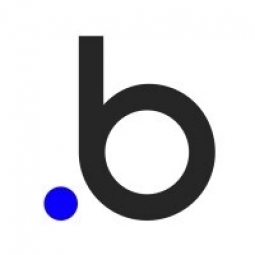
|
Fly Local: Revolutionizing Alaskan Air Travel with IoT
Fly Local, a specialty air travel aggregator, was founded with the aim of simplifying and enhancing travel experiences in Alaska. The co-founders, Tyler Flagg, Spencer Flagg, and Mark Lepczyk, wanted to create a platform that focused on unique airlines and destinations within the region. The challenge was to design a user-friendly interface that would empower travelers to discover and book adventurous travel experiences. They also wanted to drive traffic to their partner air carriers and eliminate empty searches. However, given their small staff and the time-sensitive nature of their data, they needed a solution that was not only sophisticated but also easily manageable by a layperson.
|
|
|

|
Leveraging IoT for Immersive Online Gaming: The Case of Free Rooms
Free Rooms, an online gaming platform, was founded by Corina Perjan during the COVID-19 lockdown. The platform offers virtual single and multi-player escape rooms with an immersive experience. The challenge was to create an interactive and engaging gaming platform that could be accessed remotely, without the need for any downloads or installations. The platform needed to support multiple devices, with an optimal experience on laptops. Additionally, the multiplayer escape rooms required an in-built video chat feature to enhance the gaming experience. However, Corina did not have any programming knowledge, which posed a significant challenge in building a fully functional website.
|
|
|

|
Gumball: Streamlining Influencer Marketing Campaigns with IoT
Gumball, co-founded by Steven Rho and Roger Greene, was created to address the challenges faced by brands in managing and tracking the success of their influencer marketing campaigns. The founders, who do not have programming backgrounds, identified that influencer marketing, when done right, can be a highly effective way for brands to market their products. However, managing these campaigns can be time-consuming and it can be difficult to determine which campaigns are effective and which ones are not. The challenge was to make it easy for brands of all sizes to run and measure the effectiveness of their influencer marketing campaigns, ensuring they get the most value for their investment.
|
|
|

|
Interactive Scavenger Hunt Games with IoT: A Case Study on Hidden City Hunts
Hidden City Hunts, founded by Adam Lack, was faced with the challenge of creating an interactive scavenger hunt game that could be played on a mobile browser. The goal was to provide users with an engaging and educational experience while exploring new places. The challenge was to develop a system that would allow users to choose a trail, book it, and then play the game on their smartphones. The game needed to be designed in such a way that it would provide cryptic clues for players to solve and discover hidden gems, all while learning interesting facts. The system also needed to have a scoring mechanism that would record each game's points and time, allowing players to rate their achievements.
|
|
|

|
Pet Minder: Streamlining Pet Care with IoT
Edward Buchholz, the founder of Pet Minder, identified a common problem among pet owners with shifting schedules. It was challenging to keep track of when their 14-year-old Border Collie, Dottie, had been walked or fed. The lack of a centralized system to log, share, and track pet-care activities led to confusion and potential overfeeding or underfeeding of pets. The challenge was to create a user-friendly tool that would allow pet owners to record and share pet-care activities in real-time, thereby ensuring that the pet's needs were met adequately and timely.
|
|
|

|
Realife: A No-Code Solution for Organizing Group Activities
The founder of Realife, Aris Maquelin, identified a growing need for a platform that could facilitate the organization of outdoor group activities based on users' interests and location. The increasing dominance of the virtual world and the gloom of the current period prompted him to create a solution that would help reconnect people physically. The challenge was to create an application that was easy to use, didn't consume much time, and allowed users to propose activities, register for them, and even sell tickets for paid events. However, Aris lacked a strong background in coding, which posed a significant barrier to the development of such an application.
|
|
|

|
Silence is Compliance: An IoT Solution for Centralizing Black Lives Matter Resources
The founder of Silence is Compliance, JT Esquibel, identified a need for a centralized platform where resources related to the Black Lives Matter movement could be easily accessed and shared. The challenge was to create a platform that could aggregate various types of resources such as charities, petitions, voting registration information, company statements, documentaries, books, and social media accounts. The platform needed to be user-friendly, allowing people to browse resources by type or city, and to contribute to the website or database. Furthermore, the platform needed to be built quickly and efficiently, without compromising on customization and functionality.
|
|
|
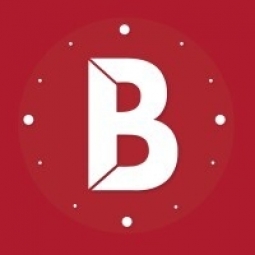
|
Digital Transformation in Retail: A Case Study of Raleigh's Centra, Longford
Joseph, the owner of Raleigh's Centra, a convenience retail group in Ireland, was seeking ways to enhance the operational side of his business. Despite the manual processes being functional, he felt the need to implement more efficient systems rather than improving the existing ones. The lack of digitalization meant that managers were unable to be as active on the shop floor as required. They struggled to focus on their team, ensure proper training, and efficiently handle customer queries. Furthermore, the business was facing challenges with data management. Managers had little control over data collection, accuracy, price changes, or actual gross margins, leading to inconsistencies. The absence of a centralized documentation management system resulted in errors in pricing and actual gross profit calculations.
|
|
|
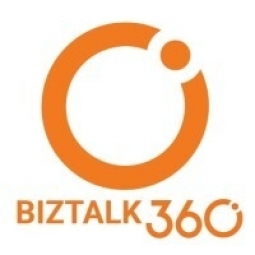
|
Agder Energi Streamlines Operations with BizTalk360
Agder Energi, one of the largest energy producers in Norway, was facing significant challenges in managing their complex system that processes about 200,000 transactions daily. They were using System Center Operations Manager (SCOM) to monitor their BizTalk Server environment, but found it more suited for infrastructure monitoring rather than application level monitoring. The team had to constantly monitor the environment and identify the root cause of problems when they occurred. For instance, if a system feeding data into BizTalk Server failed, it was a violation and the administration team needed to be notified. Additionally, there was no easy way to automate repeatedly used actions/tasks with SCOM. The team also had to adhere to strict policies to ensure the environment was healthy, which was proving to be a challenge with SCOM.
|
|
|

|
Vilmers: Implementing Industry 4.0 for Enhanced Customization and Speedy Deliveries
Vilmers, a furniture company, was facing a significant challenge in meeting the growing demand for customization and faster delivery times. The company was also keen on transitioning towards Industry 4.0, which is considered the future of the furniture industry. The challenge was not just about meeting the current demands but also about positioning the company for future growth and competitiveness. The company needed a solution that would not only help them cope with the current demand but also lay the foundation for becoming an Industry 4.0 company. The challenge was to find a solution that would seamlessly integrate with their existing processes and help them transition smoothly into the new industrial revolution.
|
|
|
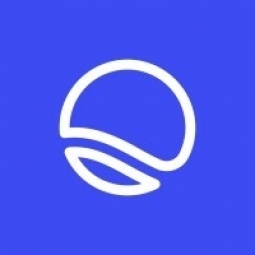
|
StayinFront's Success with eQMS System for Global Quality Standards
StayinFront, a leading global provider of mobile cloud-based field force effectiveness and CRM software for life science organizations, faced a significant challenge in maintaining consistent world-class quality standards across its operations. Their clients, including Mondelez, Kellogg's, and P&G, demanded high-quality standards. The COVID-19 pandemic triggered a deep market shift for their life science customers, forcing StayinFront to adapt quickly to maximize customer satisfaction. With a global customer base and sites in 10 countries, it became clear that StayinFront needed an electronic quality system to help them consistently execute high-quality operations with total visibility. They also needed a mechanism to onboard and train a growing workforce around core compliance demands like information security and corrective actions.
|
|
|
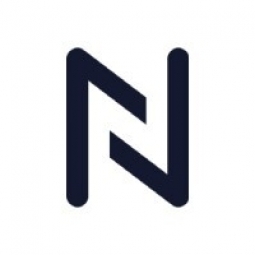
|
Imperial College Healthcare NHS Trust: Enhancing Patient Experience with IoT
Imperial College Healthcare NHS Trust, one of the UK's largest trusts, was facing a significant challenge in managing patient contacts across their Central Booking Outpatients, Admissions and Switchboard teams. The trust provides acute and specialist healthcare to approximately 1.5 million people every year across five busy sites in north-west London. The Switchboard alone used to handle an average of 11,500 interactions a day. However, call fluctuations and siloed departments made it difficult to meet daily demand, leaving upwards of 800 calls unanswered at times. These missed calls not only represented a lost opportunity to free up availability of limited clinical resources but also resulted in a significant amount of failure demand. The trust needed a contact centre solution that would allow them to manage their patient contacts more effectively, delivering an omnichannel digital service without the need for extra headcount.
|
|
|

|
Efficient Call Handling: Imperial College Healthcare NHS Trust Optimizes Inbound and Emergency Call Rates
Imperial College Healthcare NHS Trust, one of the UK’s largest trusts, provides acute and specialist healthcare to around 1.5 million people every year across five busy sites in north-west London. The trust was struggling with handling over 11,500 inbound calls a day, with agents having little time to determine the purpose of the call before routing it. They had a target KPI of answering 70% of all calls within 30 seconds. The challenge was to optimize inbound and emergency calls by tackling incorrect transfers and relieving strain on operators. This was necessary to reduce caller frustration, ward disruptions, and rising call volumes. In the case of emergency calls, where the time to answer is under 10 seconds, the trust needed to rapidly identify these priority calls amid high call volumes to trigger emergency protocols.
|
|
|

|
Automating Document Management for Efficient Railway Assessments
Network Certification Body (NCB), a leading provider of railway assurance and certification on infrastructure, vehicle, and freight projects in the UK and worldwide, was facing a challenge with its existing IT systems. With an average of 200 rail projects being delivered at any one time, safety was its first priority. However, the existing systems for managing assessment service delivery were inefficient. NCB needed to replace largely manual information management with automated document generation, while supporting the NCB’s Progressive Assurance Methodology. The new solution would need to administer complex document templates and facilitate efficient and effective client communications between NCB and its clients.
|
|
|

|
Boosting Game Performance: ExitLag's Transition from MySQL to ClickHouse
ExitLag, a tool that optimizes the gaming experience for over 1,700 games on over 900 servers worldwide, was facing performance issues with MySQL. They were encountering bottlenecks and slowdowns with specific analytical queries about user behavior analysis and network route mapping, especially as their data volume increased. In their continuous effort to resolve common connection problems for gamers, ExitLag developed a sophisticated method for sending connection packets from users. These packets are sent simultaneously through different routes, thus increasing the guarantee that the packet will be delivered. However, the increasing data volume was causing performance issues with their existing MySQL system.
|
|
|

|
Accelerating GraphQL Hive Performance: Migration from Elasticsearch to ClickHouse
GraphQL Hive, an open-source tool for monitoring and analyzing GraphQL APIs, was facing significant scaling issues. The tool, which tracks the history of changes, prevents API breakage, and analyzes API traffic, was initially using Elasticsearch for data storage. However, as the volume of data increased, the average response time began to slow down significantly. Additionally, the indexing process was problematic, with larger users affecting the query performance of smaller users. Despite attempts to improve performance by creating an index per user, the overall speed of Elasticsearch was still below expectations. The team at The Guild, the company behind GraphQL Hive, also found the JSON-based query language of Elasticsearch challenging, as they were more familiar with SQL.
|
|




